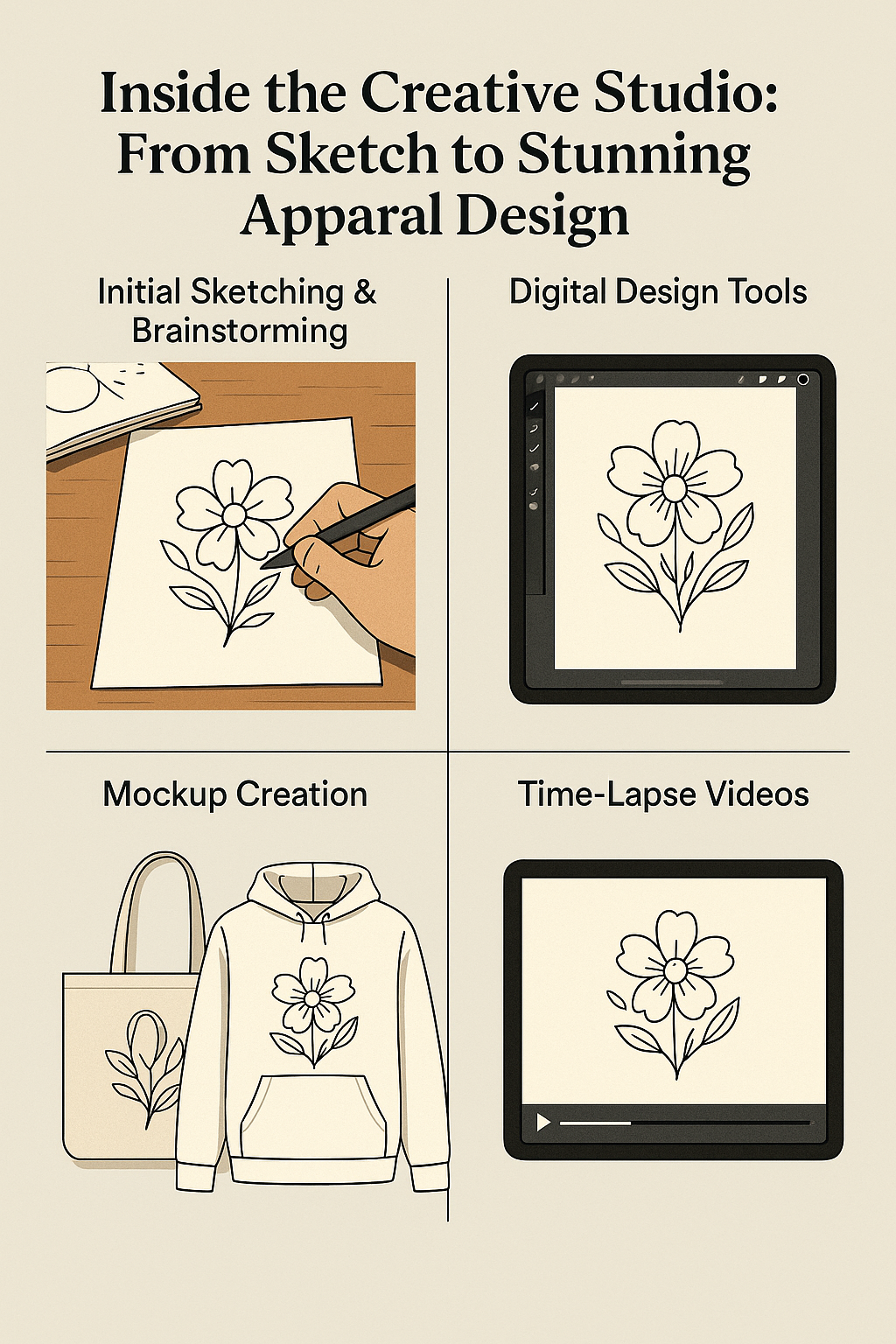
Inside the Creative Studio: From Sketch to Stunning Apparel Design
Share
In the fast-paced world of online fashion retail and apparel eCommerce, standing out requires more than just good products—it demands a unique creative process that transforms ideas into wearable art. Today, we’re taking you behind the scenes to explore exactly how we go from a rough concept to a finished design ready to hit the store.
1. Industry Context & Market Trends
The global print-on-demand apparel market is projected to grow at over 9% CAGR through 2030, driven by personalization trends, influencer-led fashion, and eco-conscious shoppers. In India, urban youth and Gen Z consumers are fueling demand for graphic tees, oversized hoodies, and statement tote bags—products that double as personal style statements.
Platforms like Qikink, Printrove, and Printful have made it easier than ever for eCommerce brands to offer made-to-order designs, reducing inventory risks and enabling niche-focused creativity. But with lower entry barriers comes fierce competition—meaning your design process must be both original and market-savvy.
2. The Creative Process: Step-by-Step
Step 1: Initial Sketching & Brainstorming
It all begins with a spark—a street-style look spotted in Mumbai, an anime fandom trend blowing up on Instagram, or a cultural moment worth capturing.
We use:
-
Mood boards on Pinterest to collect references.
-
Trend research tools like Google Trends & WGSN for fashion forecasting.
-
Hand sketches on paper or iPad to capture the first flow of ideas.
Pro Tip: Don’t skip this step. Even the most digital designs benefit from old-school pencil-and-paper freedom.
Step 2: Digital Design & Refinement
Once the concept feels right, it’s time to bring it to life using professional tools:
-
Adobe Illustrator for clean vector art.
-
Procreate for hand-drawn effects and textures.
-
Photoshop for final color adjustments and composition tweaks.
Why it matters: The right tool choice ensures high-resolution, print-ready files that look sharp whether printed on a hoodie or tote bag.
Step 3: Product Mockups
Before sending a design to production, we visualize it on real products:
-
T-shirt templates for sizing and placement checks.
-
Tote bag previews to see how patterns wrap around.
-
Hoodie mockups to test color combinations.
We often use tools like Placeit or custom PSD templates.
This step also doubles as marketing material creation—social posts with mockups drive pre-launch buzz.
Step 4: Bringing It to Life with Time-Lapses
Consumers love seeing the magic unfold.
We create:
-
Time-lapse videos of the drawing-to-digital process.
-
GIFs showing the transformation from blank canvas to finished product.
-
Reels with trending audio for Instagram.
This not only builds hype but also strengthens brand authenticity by showing the effort behind each piece.
3. Challenges & Opportunities in Apparel Design eCommerce
Challenges:
-
Oversaturation of generic designs in the market.
-
Navigating copyright issues when inspired by pop culture.
-
Balancing trendiness with timeless appeal.
Opportunities:
-
Growing appetite for limited drops and artist collaborations.
-
Expansion into eco-friendly materials and sustainable inks.
-
Leveraging AI tools for faster ideation while keeping human touch in execution.
4. Actionable Strategies for Success
-
Research Trends Weekly – Stay ahead by tracking Instagram hashtags, TikTok fashion challenges, and local streetwear.
-
Create Signature Elements – A recognizable art style or brand motif helps consumers remember you.
-
Test Designs Before Full Launch – Use pre-orders or polls to validate demand.
-
Document & Share the Process – Behind-the-scenes storytelling builds emotional connection with buyers.
5. Future Outlook & Predictions
In the next 3–5 years, expect:
-
AR/VR try-ons integrated into eCommerce platforms.
-
AI-assisted design generation to speed up iterations.
-
Increased demand for hyper-personalized, small-batch apparel.
-
Greater consumer interest in story-driven brands over mass-produced labels.
Final Takeaway:
Your design isn’t just fabric and ink—it’s a story, an emotion, and a statement rolled into one. The brands winning in online fashion retail are the ones inviting customers into their creative process and turning every piece into a conversation starter.
